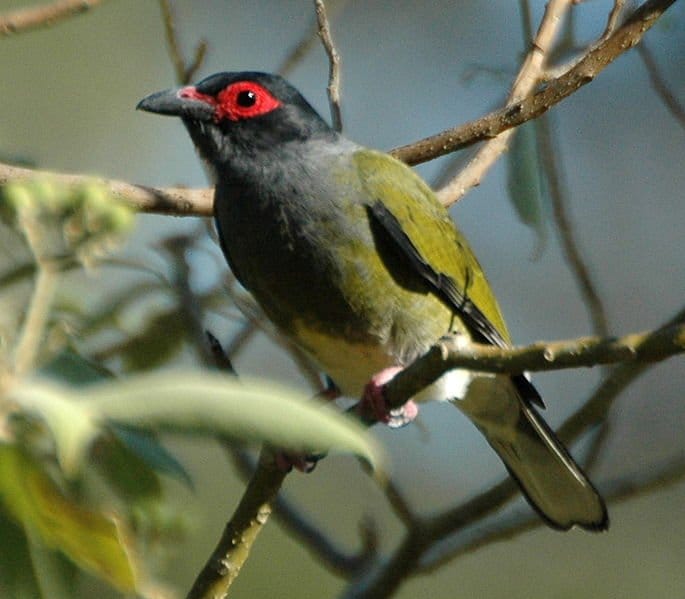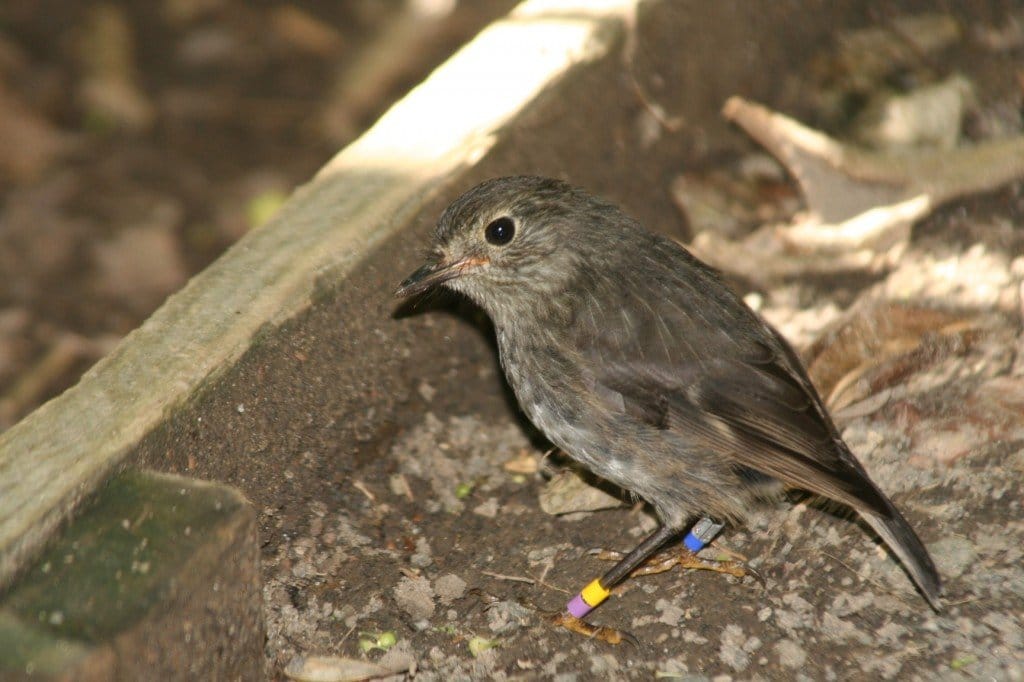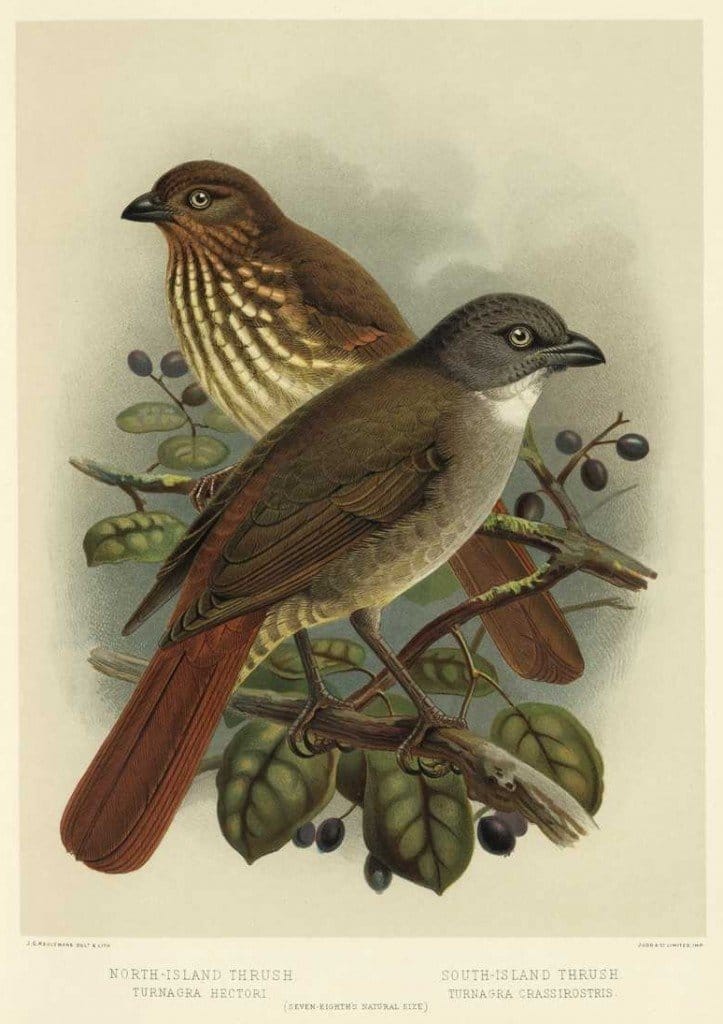One common feature of the relationship between early explorers and colonists and the birds of the New Worlds was the tendency of said explorers to name birds after familiar birds from back home (although of course there was the counter notion that the same species deserved a new name – I’m looking at you loons/divers). In some instances the names old names were given to new birds of familiar types in error (American Robins are actually thrushes, and New World sparrows are really buntings), but in many other instances these names were applied to entirely new families and genera. Hense you have New World warblers, orioles, blackbirds and tyrant flycatchers, and in Australia you have Australian treecreepers, wrens of all kinds, warblers and robins. New Zealand has this as well, with our robins, wrens and even our penguins (a corrupted form of a provincial term for auks).
The North Island Zealand Robin is a Australasian robin, not an Old World one.
In Australia and New Zealand the realisation that the avifauna was a not some impoverished version of the northern variety was a long time in coming, but even after it was made it took a lot of time to find a place for every species. To this day the three species of Mohua, a small arboreal genus that includes the spectacular Yellowhead, is a mystery; they may wel represent their own family. Another long time mystery bird, or pair of birds, were the piopio. This species pair, each endemic to one of the two main islands of New Zealand, were originally called New Zealand thrushes. This name should give you some idea of the early confusion that surrounded the genus, in fact the situation was really confused; their genus was Turnagra, a combination of Turdus for thrush and Tanagra for tanager, another group they were linked to!
North Island Piopio (front) South Island Piopio (back)
By John Gerrad Keulemans in Buller’s A History of the Birds of New Zealand. (1888)
The name “New Zealand Thrush” or native thrush was a reflection of its song, considered to be among the best of the native birds here. But what where the bird’s closest relatives? This was a good question for a very long time. It was suggested that they belonged to the Australian whistlers (Pachycephalidae) or perhaps more believably the bowerbirds (Ptilonorhynchidae), although it was hard to find support for either position. It was thought that they had been in New Zealand a long time and that perhaps they were best thought of as their own family.
This year, however, it seems that the right spot for the piopio has been found on the bird family tree. In a study published a few weeks ago it was revealed that the piopio were in fact an early offshoot of the Old World oriole family. They were perhaps most closely related to the Australasian figbirds (Sphecotheres). It seems they diverged around 20 million years ago, making them an old group but not as old as some.

Green Figbird (Sphecotheres vieilloti), in Australia, now thought to be a close relative of the piopio. By Tom Tarrant.
I have used the past tense when referring to the piopio because, unfortunately, they are one of the many species lost from New Zealand due to the actions of man. But hopefully what we can glean from the lives of these lost birds can help us learn more about what remains, and work on saving that.















Thanks for sharing this. I just saw one of these outside our bedroom window where we are staying over on Maggie Island off the coast of Townsville. I kept looking, wanting to know what he was…the Green Figbird….very lovely.